Furry friends are teaming up with health professionals all over the world to create the ultimate human-canine therapy dream team.
Townsville’s very own ‘pawesome’ pair are making deeper connections with their clients and achieving wondrous medical results after uniting just over a year ago.
You will find Lucille Robinson and her therapy dog Chilli at Move and Grow Physiotherapy where Ms Robinson has been a physiotherapist for 10 years.
She works with children and adults with a variety of learning, behavioural and development needs.
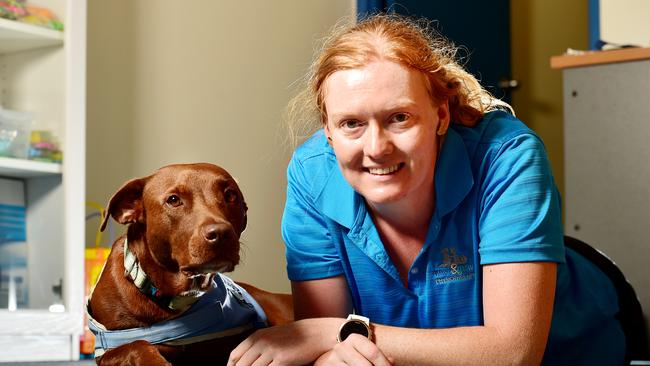
After rescuing Chilli, a Labrador cross Staffy four years ago she soon realised the effect the pooch had on children she was helping.
Ms Robinson originally worked out of her home and noticed how the children “would see him in the backyard and want to say hello”.
After a bit of digging into what her options were to incorporate Chilli into her work, Ms Robinson accidentally discovered animal-assisted therapy.
“I knew some people used therapy dogs for anxiety or psychology clinics but I hadn’t thought about how you could use a dog in a physio clinic,” she said.
A therapy dog is a dog that has been trained with their handler to provide therapeutic intervention to another person to reach their goal.
The dog is taught how to react and respond to people and their environment under the guidance and direction of their owner.
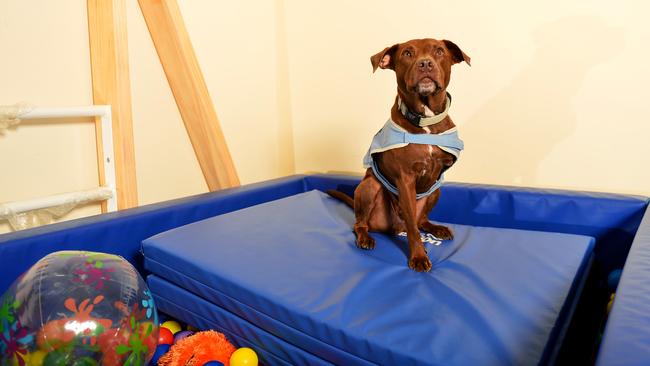
Ms Robinson completed a six-day intensive therapy dog and handler course in December 2018.
The duo were taught a range of skills including obedience, manners and canine body language and had to pass a set criteria for Chilli to be certified and insured as a therapy dog.
Ms Robinson said the training had opened her eyes to the “magic” of canines.
“Most of the time it was teaching us how to use the dogs and some really interesting things about the power of dogs,” she said. “There is a lot of research in pain clinics when there is a dog in the clinic, they report lower pain levels and looking at pictures of dogs decreases anxiety.
“Having a dog and having that ‘aaawww’ cute moment, it increases the serotonin in your brain, which helps reduce the cortisol,” she said.
It has been suggested by Therapy Dogs Australia that communication between an animal, particularly dogs and a client with social difficulties is easier than communication with other people.
Chilli is being used as a medium between Ms Robinson and her client who may be encouraged to gently pat or talk to Chilli to reward them or keep the person calm.
As animals are non-judgemental and provide an unconditional love, Chilli is assisting in increasing the engagement and rapport between Ms Robinson and themselves.
Ms Robinson said Chilli had revolutionised her life as a physiotherapist treating children with autism, cerebral palsy or Down syndrome.
“I might use him as a bribe so at the end of the session, they can pat or cuddle him but I have other kids who are much more difficult to engage with or motivate,” she said.
“They might have been overwhelmed from sensory motion or anxious or unable to communicate with people and sometimes for those kids having Chilli in the room, it de-escalates them and calms them down.
“I also have kids who are unable to follow instructions so need a bit more motivation to do so and for them, they may have five exercises to do and then they can say hi to Chilli,” she said.
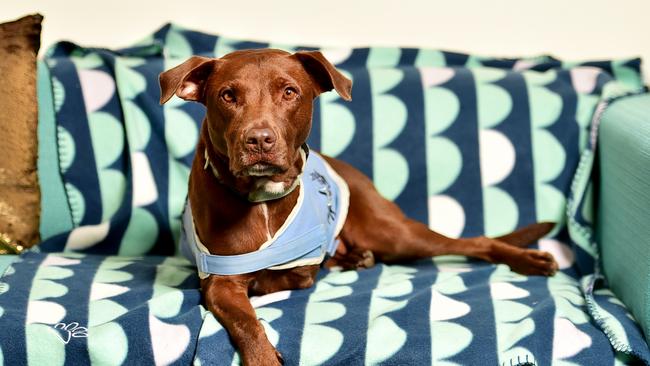
Ms Robinson explains “the most amazing moment” of Chilli’s intuitive abilities.
“I was planning to use him on stretching a little girl because stretching is uncomfortable so I had her sitting on the ground and I brought Chilli over to sit next to her,” she said.
“But then he got up and sat next to her mum, which I thought was weird so I brought him back to the little girl and he looked at me and crawled back to the mum’s feet.
“She told me that she had chronic regional pain syndrome everywhere and she almost didn’t make it to therapy because the pain was so bad that day,” she said.
“It is the intuition (Chilli) has because he hasn’t been taught to go to people in pain, he just knew that mum needed him most that day.”
It is important to note that therapy dogs are different to a service dog who focuses on its owner to the exclusion of all else.
It has only been in the past decade that therapy dogs have emerged as a mainstream medical marvel for their positive healing effects.
Ms Robinson admits further public awareness is needed about animal-assisted therapy.
“We need more education about the different types of dogs but also about being clear with dogs that do or don’t have public access,” she said. “That is where it gets tricky sometimes because people claim that their dog has public access when they don’t.
“The only dogs who have public access are assistance dogs, therapy dogs don’t,” she said.
Ms Robinson said she really couldn’t imagine performing her work any other way now.
“I am so grateful Chilli came into my life,” she said.
“Having an animal-assisted clinic is something I didn’t plan but he had the aptitude for it and kids want to meet him.”
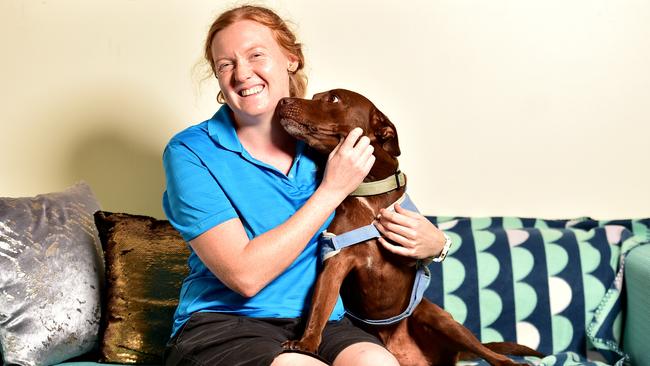
For Tolga occupational therapist Jolene Kattenberg, her work was turned upside down when she introduced her therapy dog Kelso into her work world.
Ms Kattenberg works with children with a range of disabilities including aggression, anxiety or sensory issues that they were born with or that they have developed. Kelso has been the missing link for Ms Kattenberg who helps her manage sensory processing and motor skills, language and social interaction with her clients.
After completing an intensive training course in December 2018, Ms Kattenberg said incorporating Kelso into her work had “motivated people to attend therapy sessions”.
“Career wise it has been life changing and having him here I have seen benefits to myself as a therapist as well as the interaction particularly for the decreasing of anxiety and that non judgmental animal there for the interaction,” she said.
Ms Kattenberg said she used Kelso as a springboard to interact with the children she treats to support their therapy goals.
“I have non-verbal children that don’t want to interact with their disability but they will interact with Kelso and then Kelso will interact with me and it is lovely link,” she said.
“The child is starting to learn that it is a non-judgemental action and dogs show so much love towards the person.”
The results Ms Kattenberg has seen with her clients included decreased anxiety and aggression, increased communication and the desire to participate in social interaction.
Kelso and Ms Kattenberg visit nursing homes and schools in their spare time to support those who are most vulnerable and respond to the power of man’s best friend.

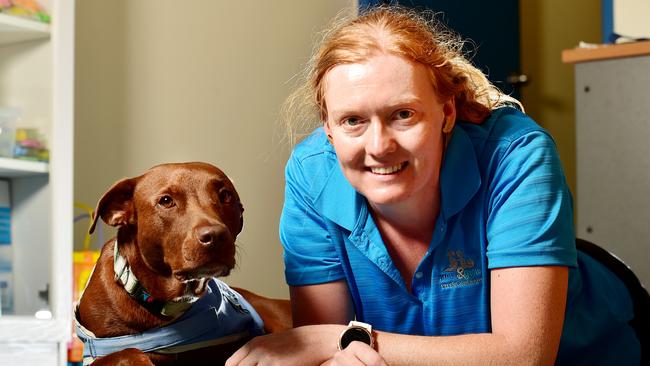
Add your comment to this story
To join the conversation, please log in. Don't have an account? Register
Join the conversation, you are commenting as Logout
Highway advisory group members linked to LNP donations
Two members of the state government's new Bruce Highway Advisory Council have been linked to political donations to the Crisafulli Government.
Cattle sale cancelled due to safety concerns of flood-damaged roads
Damaged roads due to flooding across NQ are proving costly for the regions cattle farmers, with one saleyard cancelling a scheduled cattle sale due to safety concerns for truck drivers who would have attended.